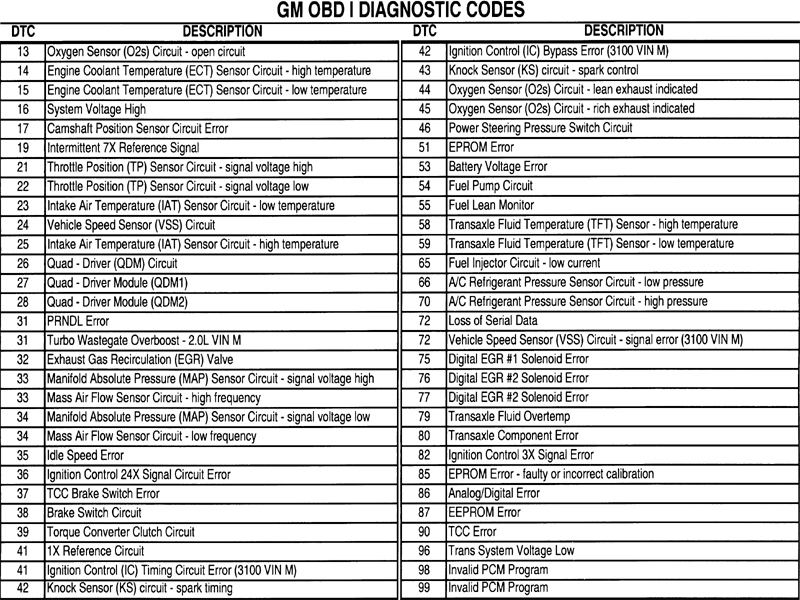Chevy Code P0442: Decoding the Mystery of Your Check Engine Light
That little yellow check engine light can be a real heart-stopper, can't it? It’s like a cryptic message from your car, whispering, “Something’s not quite right.” If your Chevy’s flashing that light and a code reader reveals P0442, you might be feeling a bit anxious. But take a deep breath. This article is your guide to deciphering the mystery of the dreaded Chevy code P0442.
P0442 stands for "Evaporative Emission Control System Leak Detected (Small Leak)." In simpler terms, it means there's a minor leak somewhere in your car's evaporative emission system (EVAP). This system is designed to prevent fuel vapors from escaping into the atmosphere. It's an important part of keeping your car running cleanly and efficiently, and its proper functioning is crucial for passing emissions tests.
So, what does a “small leak” actually mean? It can be anything from a loose gas cap to a slightly cracked hose or a small hole in the fuel tank. The challenge lies in pinpointing the exact culprit. While a P0442 code might seem minor, ignoring it can lead to more significant problems down the road. Not addressing the issue could result in failed emissions tests, decreased fuel economy, and potentially even damage to other components of your vehicle.
The EVAP system, while complex, plays a vital role in your Chevy's operation. It captures fuel vapors from the gas tank and stores them in a charcoal canister. These vapors are then purged into the engine to be burned during combustion. This process prevents harmful pollutants from entering the air and also helps improve fuel efficiency. A small leak disrupts this closed system, leading to the P0442 code.
This code is particularly common in Chevys, spanning various models and years. Understanding why it occurs is the first step towards effective troubleshooting. Common causes include a loose or damaged gas cap, a faulty purge or vent valve, a cracked EVAP canister, or leaks in the hoses or lines connecting these components. Don't be intimidated by these technical terms – we'll break them down and provide practical steps for identifying the source of the problem.
One simple check you can perform is inspecting your gas cap. Make sure it's tightly sealed and that the rubber seal is intact. If you suspect a leak elsewhere, you might need specialized tools like a smoke machine to pinpoint its location. A qualified mechanic can use this machine to introduce smoke into the EVAP system, making it easier to visually identify any leaks.
Advantages and Disadvantages of Addressing P0442
| Advantages | Disadvantages |
|---|---|
| Improved fuel economy | Cost of repairs |
| Reduced emissions | Time spent diagnosing and fixing |
| Passing emissions tests | Potential for misdiagnosis |
Frequently Asked Questions about P0442
Q: Can I drive with a P0442 code? A: While you might be able to drive for a short period, it's best to address the issue promptly to avoid potential problems.
Q: Is P0442 always caused by a loose gas cap? A: While a loose gas cap is a common cause, it can also stem from other issues within the EVAP system.
Q: How much does it cost to fix a P0442 code? A: The cost varies depending on the underlying cause, ranging from a few dollars for a new gas cap to several hundred for more complex repairs.
Q: Can I fix P0442 myself? A: Some repairs, like replacing a gas cap, are relatively simple. However, more complex issues might require professional assistance.
Q: How do I prevent P0442 from occurring again? A: Regular maintenance and inspections of the EVAP system can help prevent future leaks.
Q: What tools do I need to diagnose P0442? A: A code reader is essential for retrieving the code. Further diagnosis might require specialized tools like a smoke machine.
Q: Can a P0442 code cause other problems? A: Ignoring it can lead to decreased fuel economy, failed emissions tests, and potential damage to other components.
Q: What is the difference between P0442 and other EVAP codes? A: P0442 specifically indicates a small leak. Other EVAP codes may point to different issues within the system.
Tips and Tricks for Dealing with P0442:
Start with the easiest fix first: check your gas cap. Ensure it's tightly sealed and the gasket is in good condition. Keep detailed records of any repairs or maintenance performed on your EVAP system. Consider using a fuel system cleaner periodically to help prevent buildup that can contribute to leaks. If the problem persists, consult a qualified mechanic with experience in diagnosing EVAP system issues.
Understanding and addressing a Chevy code P0442 is crucial for maintaining your vehicle’s health, performance, and environmental impact. While this "small leak" might seem insignificant, ignoring it can lead to bigger problems and more costly repairs down the line. By taking the time to understand the EVAP system and the potential causes of P0442, you can empower yourself to take appropriate action. Whether it’s a simple gas cap replacement or seeking professional help for a more complex issue, addressing this code ensures your Chevy continues to run smoothly and efficiently, while minimizing its environmental footprint. Don’t delay – take action today to resolve your P0442 code and enjoy a worry-free driving experience.
Unveiling the allure of rio mar beach club a puerto rican gem
Decoding cobalt blue mixing the perfect hue
Unearthing nfl draft gems navigating the second round













